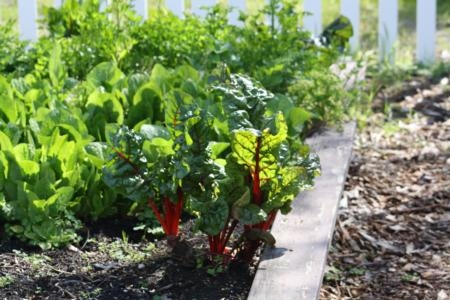Posts Tagged: hunger
Urban farms can help feed the hungry
(The Sacramento Bee published an op-ed by Rachel Surls, UC ANR urban agriculture advisor for Cooperative Extension in Los Angeles County, in its editorial pages today. The op-ed is reprinted below.)
In similar discussions around the state on the desire of residents to raise their own food with fewer restrictions, there is a core issue that should be front and center. In California, where we grow half of the country's fruits and vegetables, our own citizens too often go hungry.
Fifteen percent of households – roughly 5.5 million Californians – are “food insecure,” according to a 2013 federal report, meaning they do not have “consistent access throughout the year to adequate food for healthy active living.” Families with children are even more likely to run short on food.
We know that eating plenty of fruits and vegetables is key to a healthy diet, but not everyone has ready access to a grocery store, or can afford to buy fresh produce. One potential solution is to make it easier to grow food in backyards and on vacant land.
The University of California's Global Food Initiative aims to help the world sustainably and nutritiously feed itself. One way that UC Agriculture and Natural Resources is working toward that goal is by providing information for urban farmers and decision-makers interested in urban agriculture to improve food security in their communities. While hunger and food security are complex issues, urban farming can be used with other strategies to help ensure access to affordable, nutritious food.
And the idea seems to resonate with Californians. Interest in urban food production can be seen around California. Following strong advocacy efforts at the grassroots level, Assembly Bill 551 was passed in 2013, allowing local governments to designate urban agriculture incentive zones. San Francisco has enacted the state's first one.
Several other cities have developed local policies to promote urban agriculture. San Diego, for example, has made it easier for residents to keep chickens and bees in their backyards, and to establish farmers markets, produce stands, community gardens and small urban farms. Oakland updated its city code in 2014 to allow community gardens in most of the city without a special permit.
But obstacles to urban agriculture remain in many cities, including land use restrictions, difficulty accessing water, soil contamination and a lack of information on local regulations. After conducting a statewide study, my colleagues and I found a number of common challenges and came up with six steps that local officials can take to break down common barriers.
They are: Make zoning and regulatory information accessible; develop a transparent process for using city-owned land; create an urban agriculture incentive zone; update zoning to make it urban-ag-friendly; make water accessible while promoting efficient use; and provide guidance and support for soil testing and remediation.
An easy way to let urban farmers know what is allowed is to post information on a website, as San Francisco has done. Through AB 551, cities can entice property owners to lease their land for gardens and farms in exchange for reduced property taxes. Cities can also partner with urban farmers and local food policy councils to identify concerns and ways to address them.
In addition to health benefits, urban gardens beautify the community and provide common ground for people of different ages and cultures to work together. They can also create jobs, learning opportunities and economic savings on food. Given the numerous potential benefits, local officials can better serve their communities by making it easier to cultivate food locally.
Clinton lauds UC research in hunger speech
Secretary of State Hillary Clinton acknowledged the contribution of UC research in combating world hunger in a speech yesterday honoring the winners of the 2010 World Food Prize.
The president of Bread for the World, David Beckmann, and president of Heifer International, Jo Luck, were honored by the State Department for expanding their grassroots organizations and bringing help to the world's hungry.
Bread for the World is a Christian advocacy organization that presses lawmakers to support anti-hunger policies. Heifer International brings food and income producing animals to extremely poor families around the globe.
In her presentation, titled "Remove the Barriers, Remove the Fear of Sharing," Clinton recounted a litany of work by U.S. scientists to feed the world.
"In South and Southeast Asia, we’re seeing good research being done on rice, and with our support, research at UC-Davis and the International Rice Research Institute are developing strains of rice that thrive even when they have been submerged in water," Clinton said, according to the speech text published on the State Department website.
Clinton noted that the federal government supports agricultural research and extension with funding to benefit farmers and consumers worldwide.
"Some of this is not expensive, like no-till farming, which has been adopted by thousands of farmers in Asia with help from the United States. And there is so much that we can do in conveying information about what works as well as investing in new answers," Clinton said.

Hillary Clinton


